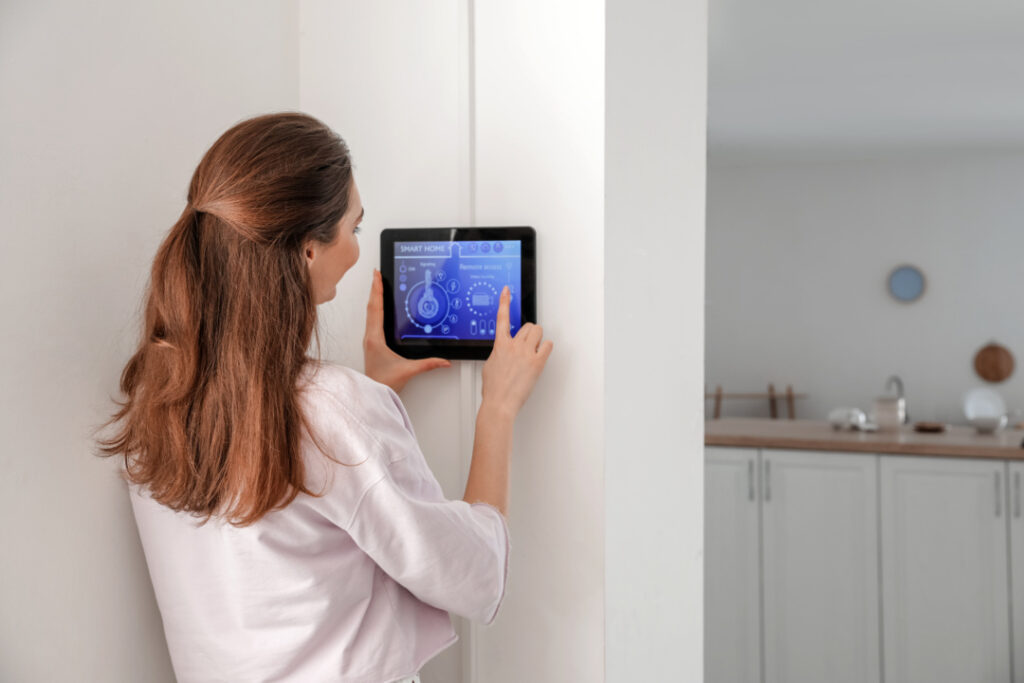Smart sensors have revolutionized storage management with advanced temperature and humidity control solutions. Previously, organizations relied on manual checking or primitive mechanical systems to control these parameters, sometimes leading to fluctuating conditions. However, with the introduction of Internet of Things (IoT) technology in the early 2000s, it became more convenient to integrate smart sensors into storage solutions. Smart sensors continuously monitor and calibrate environmental conditions, offering optimum storage for sensitive items such as electronics, food, and documents. Industries slowly recognized the value of precise climate control, and the application of smart sensors became widespread in modern storage systems. These devices now offer organizations reliable, automated solutions to maintain product quality and shelf life.
What Are Smart Sensors?
Smart sensors are innovative devices designed to monitor and control various environmental factors in real time. These sensors use advanced technology to gather data and adjust systems automatically, offering more precise control than traditional methods.
Here are some key features of smart sensors:
- Real-time monitoring: They track temperature and humidity continuously, providing up-to-date information.
- Automation: Sensors automatically adjust systems to maintain optimal conditions without manual intervention.
- Connectivity: Many smart sensors connect to mobile apps or cloud systems for easy access and control.
- Energy efficiency: These sensors help reduce energy costs by adjusting systems only when necessary.
By leveraging these features, smart sensors ensure more reliable and efficient control, improving the overall performance of storage systems.
Benefits of Smart Sensors
Historical Note:
The concept of regulating storage environments dates back to the early 20th century when warehouses and cold storage facilities began using basic mechanical systems for temperature control. However, these methods were often inefficient and prone to failure, leading to the need for more reliable solutions. The advent of smart sensors has transformed this approach, bringing precision and automation to storage management.
Smart sensors offer significant advantages in various storage environments, providing consistent control over temperature and humidity. They eliminate the need for manual checks and the potential for human error, ensuring that conditions remain ideal for sensitive goods. For example, storage units in Colorado Springs, CO, can benefit from these sensors by maintaining a steady temperature year-round, even with the fluctuating weather. The integration of smart sensors into storage units also promotes energy savings, as the systems only adjust when necessary, reducing waste. Furthermore, these sensors provide detailed data that can help businesses identify patterns and anticipate potential issues before they arise. As technology advances, these sensors continue to offer even more precise monitoring, making them an essential tool for businesses looking to safeguard their stored goods and optimize efficiency.
Statistics: Studies show that businesses using smart sensors can reduce energy consumption by up to 30%, leading to significant cost savings over time.
Temperature Control in Storage
Temperature control is crucial in storage warehouses, especially when dealing with sensitive goods like electronics, pharmaceuticals, or perishables. Damage or spoilage results from temperature changes, and hence, it is necessary to maintain a stable climate. Smart sensors provide an effective solution through real-time monitoring and adjustment of temperature to the predefined level. In contrast to manual adjustment or basic thermostat-based systems, the sensors ensure accuracy through automatic real-time correction. The round-the-clock regulation prevents overheating or undercooling, which can lead to damage to valuable stored goods. In food storage businesses, for example, where precise ranges of temperature are necessary to prevent spoilage, smart sensors play a vital role in improving shelf life and maintaining quality.
The technology also reduces energy costs for companies through the optimization of temperature settings only when needed, as opposed to having systems continuously running. With real-time recording of data, companies are also able to track temperature trends and predict possible issues before they happen, ensuring the storage warehouse is secure and efficient. Overall, with more industries realizing the benefits provided by automated temperature control, smart sensors have become a vital part in modern storage solutions.
Humidity Control and Storage
Humidity plays a critical role in maintaining the integrity of many stored items. Too much moisture can cause mold, mildew, and rust, while too little can lead to drying out or cracking. Smart sensors are essential for regulating humidity levels, ensuring that items are kept in the perfect environment. These sensors provide continuous monitoring and make adjustments automatically, maintaining a steady balance.
Some of the key benefits of humidity control include:
- Prevention of mold and mildew: Smart sensors prevent excess moisture that can promote growth.
- Protection of sensitive materials: Items like paper, artwork, and electronics are safeguarded from humidity-related damage.
- Enhanced air quality: Proper humidity control also contributes to better overall air quality in storage spaces.
By keeping humidity levels consistent, smart sensors protect valuable items, extend their lifespan, and contribute to a healthier storage environment. These sensors offer a level of precision and efficiency that manual monitoring simply cannot match.
Choosing the Right Sensors
When selecting smart sensors for monitoring temperature and humidity, there are several factors to keep in mind to ensure they match the specific requirements of the storage space. First, consider what’s being stored. Some products, such as food or electronics, require more stringent control of the environment than others. You’ll want to choose sensors that can handle the required temperature and humidity levels without over-complicating the system. Connectivity is another consideration. Most newer sensors offer integration with mobile apps or cloud-based platforms, allowing for remote monitoring and control. This can be especially useful for businesses with multiple storage warehouses or for those who need to check on conditions while away from the storage site.
Durability and reliability are also critical considerations. Since these sensors work around the clock, they need to be able to withstand environmental factors such as dust, moisture, and temperature fluctuations. Finally, look for sensors that offer data analytics. These features serve to track trends, predict issues, and help ensure conditions are kept consistent over time. By choosing the right smart sensors, businesses can make their storage solution more efficient, reliable, and cost-effective.
The Future of Smart Sensors in Storage
The future for smart sensors in storage looks good, with continued technological developments enhancing their functions. As sensors become more advanced, they will offer even more precise control over temperature and humidity, and storage systems will become even more efficient. Developments in machine learning and artificial intelligence will allow sensors to predict deviations in the environment and make adjustments automatically before any issues arise. These sensors will also be more energy efficient, which will help businesses save on operational costs while still offering the best conditions for products in storage. With more integration into IoT networks, smart sensors will allow seamless communication between devices and platforms, and the management of storage will be further simplified. As industries become more aware of the necessity to store goods under optimal conditions, the use of smart sensors will only grow, and they will become an indispensable tool for businesses to safeguard their products and improve the efficiency of operations. The future looks good for this technology, with increased automation and reliability of storage systems.
Caroline is doing her graduation in IT from the University of South California but keens to work as a freelance blogger. She loves to write on the latest information about IoT, technology, and business. She has innovative ideas and shares her experience with her readers.





![‘Frankenstein’ Review – Guillermo del Toro’s Definitive Look At The Nature And Nurture Of Monstrosity [TIFF 2025] ‘Frankenstein’ Review – Guillermo del Toro’s Definitive Look At The Nature And Nurture Of Monstrosity [TIFF 2025]](https://cdn.geekvibesnation.com/wp-media-folder-geek-vibes-nation/wp-content/uploads/2025/10/Frankenstein-175_PF_20240430_20377_R-300x200.jpg)
![‘Wake Up Dead Man: A Knives Out Mystery’ Review – In Rian Johnson We Trust [LFF 2025] ‘Wake Up Dead Man: A Knives Out Mystery’ Review – In Rian Johnson We Trust [LFF 2025]](https://cdn.geekvibesnation.com/wp-media-folder-geek-vibes-nation/wp-content/uploads/2025/10/Wake-Up-Dead-Man-A-Knives-Out-Mystery-300x169.jpg)